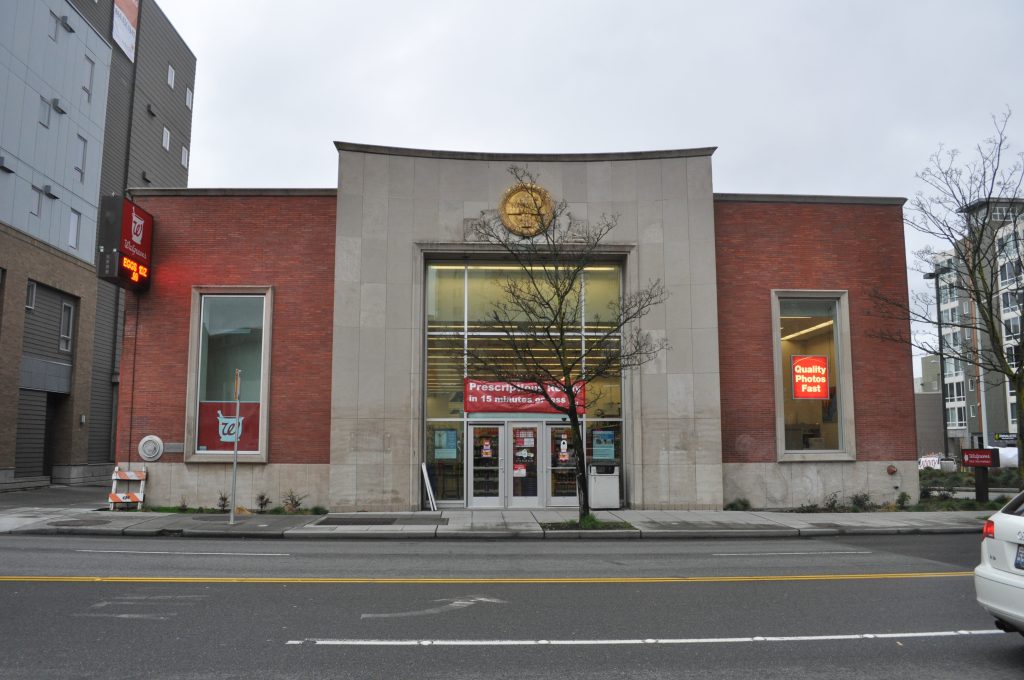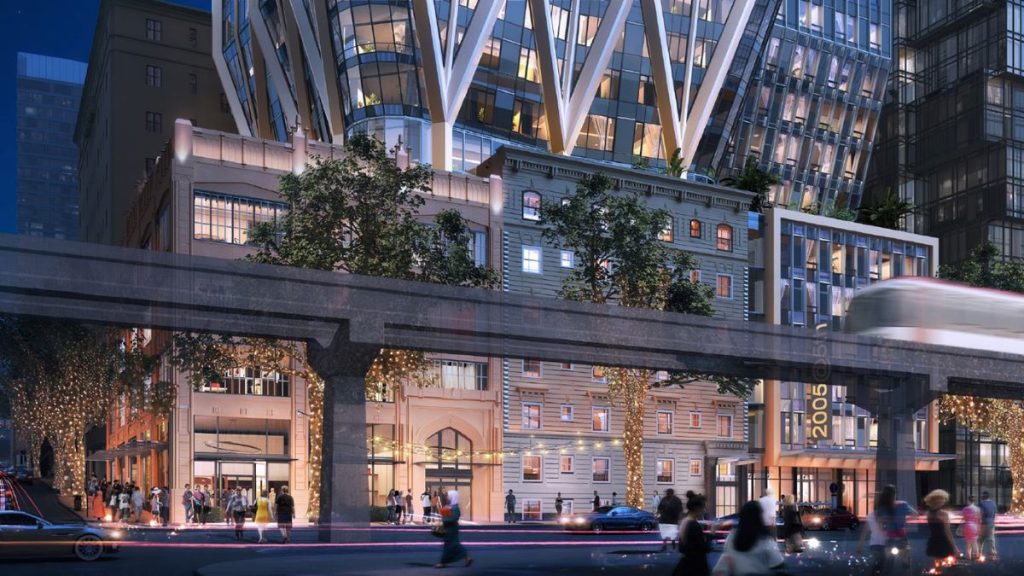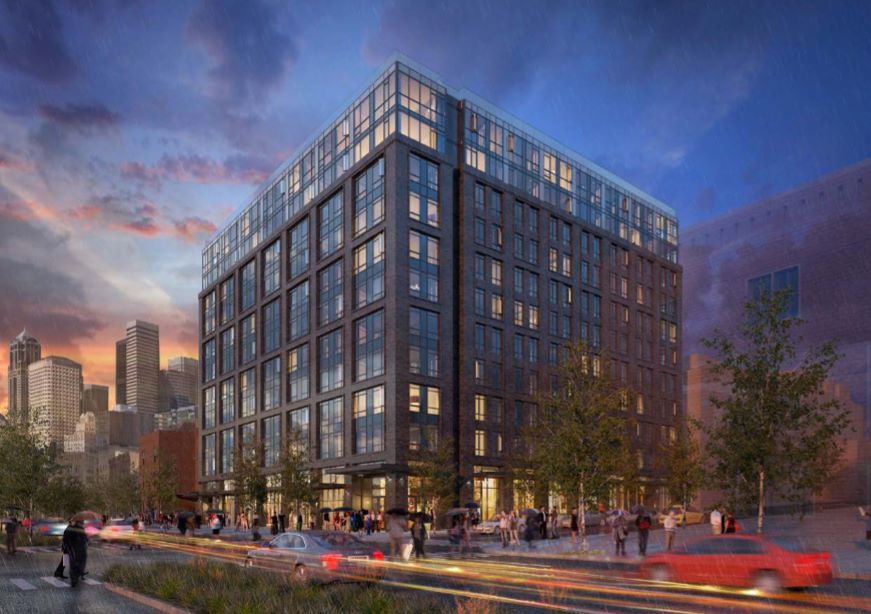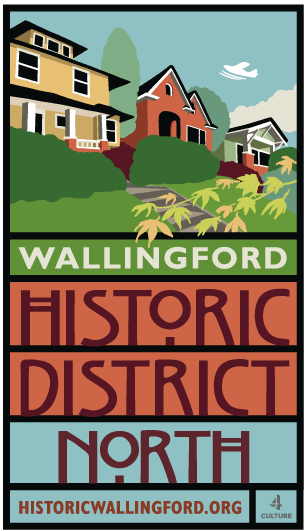
In Seattle, any person can nominate just about any building for historic landmark status — even without the consent of the building owner — which can often delay or completely upend housing projects. The Washington State Legislature is taking up the issue and advancing legislation that would place some guardrails on historic landmark programs.
Senate Bill 5554 has already advanced out of committee and onto the floor calendar, with final passage possible any day. Sponsored by Senator Jesse Salomon (D-32nd, Shoreline), the bill would prevent cities from landmarking buildings without the owner’s consent or if they are less than 40 years old. Senators Jess Bateman (D-22nd, Olympia), Keith Goehner (R-12th, Dryden) and Chris Gildon (R-25th, Puyallup) have also signed on as co-sponsors, evidence of the bipartisan appeal of the bill.
House Bill 1576 is its companion bill in the lower chamber, sponsored by Rep. Amy Walen (D-48th, Kirkland) and Rep. Andrew Barkis (R-2nd, St. Clair). The bill is now in the rules committee, after a vote in the local government committee on February 18 that amended the bill, but ultimately advanced it. It could be pulled onto the House floor anytime between now and March 12, when non-budget bills face their next deadline, the “house of origin” cutoff.
The House bill report notes some concessions offered to historic preservationists, keeping some landmarking tools on the table. The amended House bill:
- Provides that historical landmark designations made by a city before the effective date of the bill are not affected by the prohibitions in the bill;
- Allows a property to be designated as a historic landmark without the owner’s consent if the property is more than 100 years old; and
- Provides that a city or code city is not precluded from allowing a property that is less than 100 years old to be nominated as a historic landmark outside of a designated historic district without the consent of the property owner, as long as such consent is obtained prior to the nomination being approved and the designation applied.
Reformers point out that landmarking is a major weapon in the arsenal of predatory delay. Even if a building owner is able to convince a landmark board that their property isn’t a historic landmark in need of permanent preservation, the time and risk involved in going through the landmarking process can be enough to scare off builders and investors, delaying much-needed housing.
The housing lost to predatory landmarking
The pro-housing environmental thinktank Sightline Institute has long been a critic of Seattle’s landmarking program, and the other forms of red tape that the City has thrown up impeding homebuilding. Sightline researcher Dan Bertolet testified in favor of the senate bill during a hearing earlier this month, citing numerous examples of housing projects being killed when an outside party intervened to landmark the underlying property.
“[L]andmarking prevented 63 apartments from getting built, and then that building became derelict over time, until last month, when it was demolished anyway,” Bertolet said. “And it’s still happening. Last month, Historic Seattle nominated for landmark status, a structurally obsolete apartment building owned by the YWCA. And that will halt YWCA plans to redevelop it into 83 new homes.”
In Seattle, any site over 25 years old can be landmarked, without the owner’s consent, based on six broad criteria, including “its prominence of spatial location, contrasts of siting, age, or scale, it is an easily identifiable visual feature of its neighborhood or the City and contributes to the distinctive quality or identity of such neighborhood or the City.” Tacoma also has a landmarking program that does not require the owner’s consent, increasing the opportunity for abuse to block housing.
In one high-profile incident, the Seattle City Council blocked redevelopment on a one-story Walgreens drive-thru on the edge of South Lake Union — and its adjacent parking lot, bowing to landmarking pressure.

In another example, 500 homes located Downtown at Fifth Avenue and Virginia Street have been delayed for a decade due to the obstacle that landmarking the existing buildings created. The landmarking of the Griffin and Sheridan buildings means those building facades must be preserved for a 44-story apartment tower to rise, the Daily Journal of Commerce noted, complicating the project and adding costs.

In his testimony in favor of Salomon’s bill, Ben Maritz, principal of development firm Great Expectations (and a board member at The Urbanist), shared his version of running into the historic landmarking program as his firm tried to redevelop a Central District site that used to be a YWCA — separate from the aforementioned YWCA building in Belltown. Maritz was ready to break ground to construct the new affordable homes, but a late-breaking historic landmarking bid stalled out the project.
“And then I found out that a single neighbor had walked by the site,” Maritz said. “It was fully permitted, completed its master use permit, design review, everything. They had seen the big sign up in front of it, and realized that it was being redeveloped as affordable housing, and they started the process for landmarking without our consent. This project was one that we had started three or four years prior. This is a land-use 911 emergency. I called my legal and consulting team, had to spend a lot of money on trying to fight this, and the risk is still there.”
While Maritz was successful in defeating the first landmarking bid, it set the project back, and that added time and expense can still doom a development project even if builders ultimately get the go ahead.
“It could have totally killed the project,” Maritz added. “If they’ve been successful doing the landmarking, it would have been dead. But just the process of having to fight the landmark, probably alone, if you’re successful, would be a year alone.”
Middle housing is especially vulnerable to landmarking, other obstacles
Landmarking without owner consent could become an even bigger threat to small-scale middle housing development legalized by HB 1110 and going to effect in the Puget Sound region this year. Shepherded by then-Rep. Jessica Bateman (D-22nd, Olympia) — who now serves as a state senator and sits on the Local Government Committee that greenlit the landmarking reform bill — HB 1110 middle housing reform aims to spur multiplex construction in single-family zones, with fourplexes legalized in major cities across the state.

“The small builders who typically construct middle housing do not have the financial resources to take on the risk that a property they plan to develop could become landmarked,” Bertolet wrote in a brief to legislators. “Just the risk that a building could be landmarked is enough to make small builders walk away. And when owner consent is not required, and when anyone can nominate a property, that risk is always present. Even if the nominated building would ultimately not be approved for landmark status, the nomination alone sets in motion a process that could take perhaps a year to resolve — far too long for a small developer to hold a project in limbo.”
The economics of middle housing is tricky and easily short-circuited by obstacles, as a recent Urban Institute report noted, as it examined by reforms don’t consistently lead to a major uptick in building.
Landmarking proponents push local control
On the flip side, speaking against the bill was Chris Moore, the executive director of the Washington Trust for Historic Preservation.
“We are a statewide nonprofit advocacy organization committed to preserving Washington’s historic and cultural resources,” Moore said.
We are opposed to SB 5554 as written. But of course, we do understand the critical need for housing affordability throughout the state. […] Only 0.5% of the parcels in Seattle are landmarked, either individually or within historic districts. So we’re not talking about a huge volume of this either. We see housing affordability and preservation both as key social good goals.”
Colleen McAleer with the Laurelhurst Community Club spoke against the bill, spinning a doomsday (though staggeringly unlikely) scenario where the Space Needle would be redeveloped.
“This bill is wasting time and budget on one half of 1% of the land parcels in Seattle, which has a negligible impact on housing development,” McAleer said. “This bill would allow them to demolish iconic landmarks such as the Space Needle, they could be resold without permanent landmark status, and demolished leaving soulless cities and towns across Washington state.”

While landmarking has been used to block affordable housing, a spokesperson did contend that historic preservation is not at odds with housing affordability, and can go hand-in-hand in some cases. Notwithstanding, Eugenia Woo, Director of Preservation Services at Historic Seattle said landmarking can serve as a higher anti-displacement purpose.
“Preservation and housing are not mutually exclusive,” Woo said. “This is a false choice. Preservation is not anti-development. It can be a tool for anti-displacement.”
Conversely, advocates for housing abundance argue that the net effect of creating a challenging gauntlet for housing is anti-development, pro-displacement, and ultimately leads to working families being pushed out of cities.
“The main Seattle historic advocacy group is currently advocating for Seattle to water down its HB 1110 plan to exclude any local landmark district and criticizing the ”cookie-cutter’ new HB 1110 developments,” Bertolet wrote. “And, of course, they’re focused on Madrona, Mt. Baker, Ravenna, and Wallingford. Landmarking and creating historic districts will be the key tool of stymie HB 1110.”

Some highly motivated Wallingford residents have already taken steps to turn their neighborhood into a historic district. One swath of the North Seattle neighborhood has already advanced down the path of historic listing.
“Requiring owner consent through SB 5554 would eliminate this risk and prevent the misuse of historic landmarking to undermine the legislature’s goals for HB 1110,” Bertolet said. “Overall, it’s a commonsense solution aligned with state norms that would help the state address its massive housing shortage.”
Visit the House Bill 1576 or Senate Bill 5554 page for more information or to weigh in with your public comment.
Correction: The original version of this article incorrectly identified Great Expectations as the developer of the YWCA project with 83 homes in Belltown. Great Expectations is developing a separate site in the Central District that used to be a YWCA. This was corrected on February 20.
Doug Trumm is publisher of The Urbanist. An Urbanist writer since 2015, he dreams of pedestrian streets, bus lanes, and a mass-timber building spree to end our housing crisis. He graduated from the Evans School of Public Policy and Governance at the University of Washington in 2019. He lives in Seattle's Fremont neighborhood and loves to explore the city by foot and by bike.



